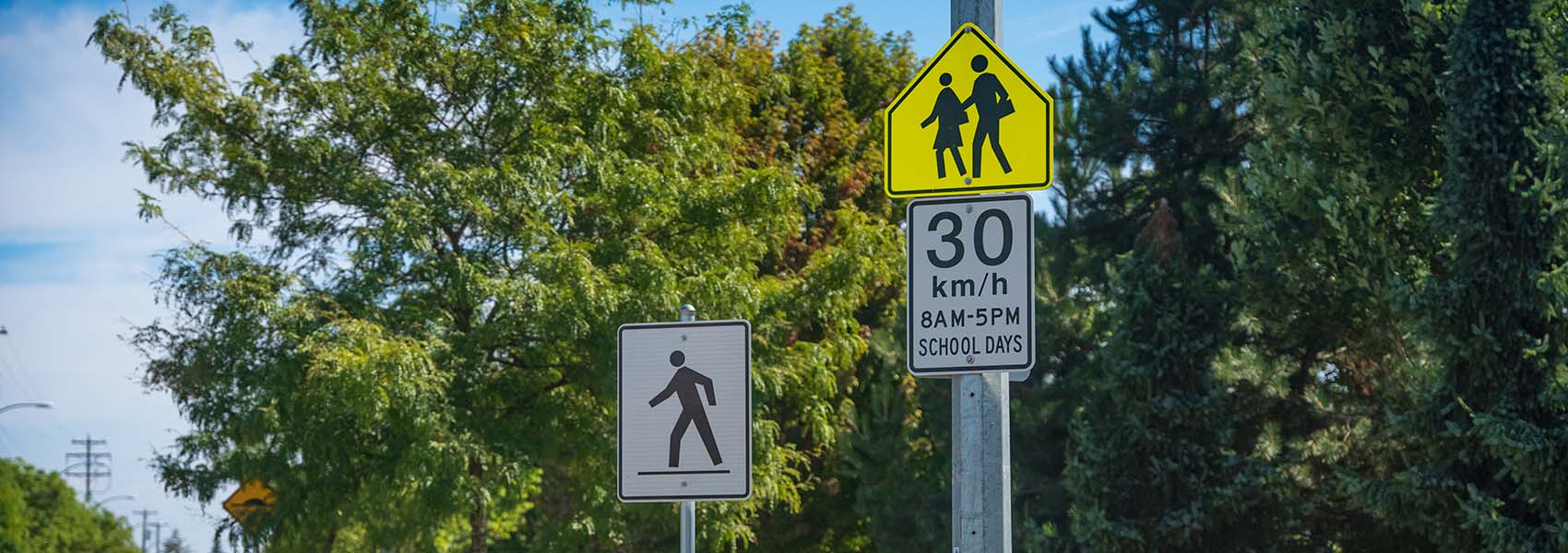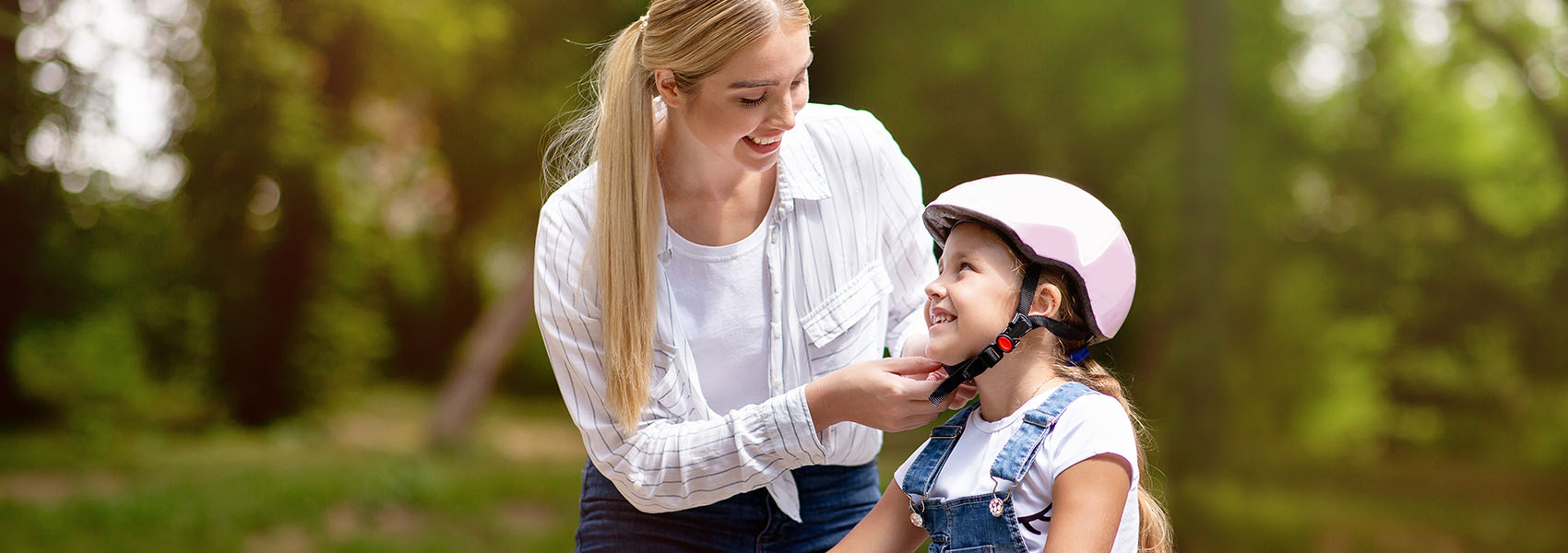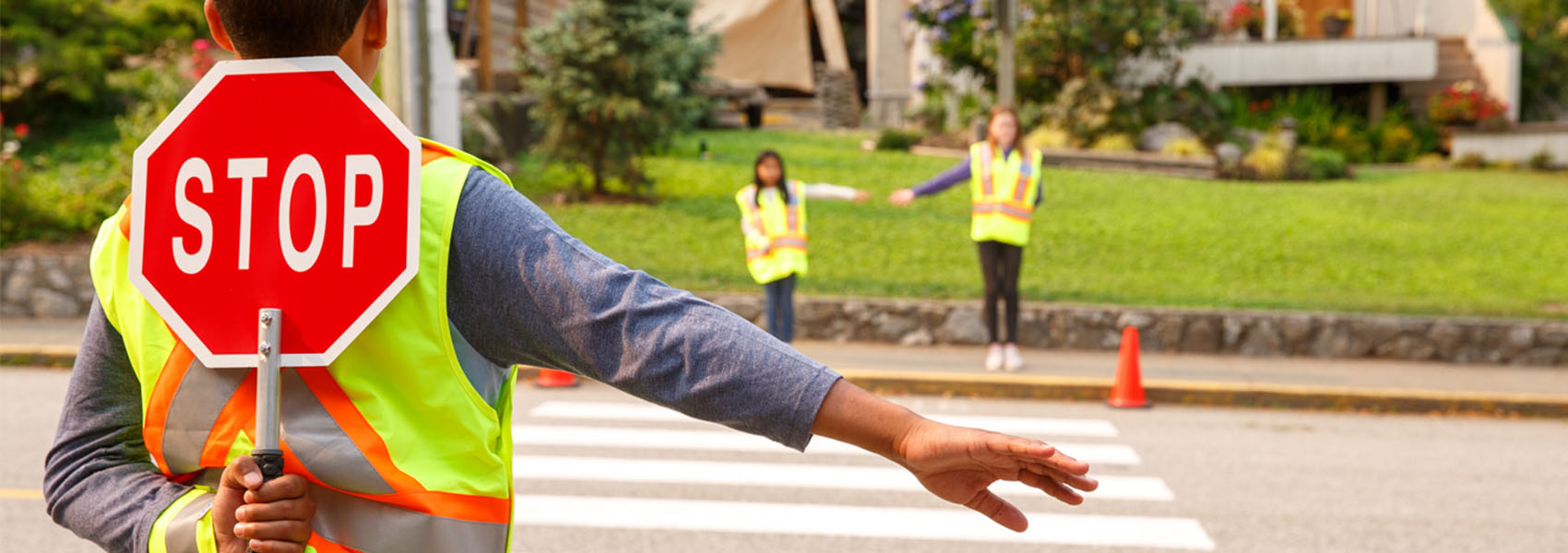Take our quiz on school zone safety and learn your A to Z
Safety and community is at the heart of BCAA. This is our home. And just like any neighbourhood, we are committed to keeping everyone in the community protected.
With the new school year starting back up, there’s nothing more important than keeping our children safe. Test yourself to see how well you know your school zone safety and then check out our A to Z of safety tips to brush up your knowledge.
True or False
- School zone speed limits are 30km/hour from 8am until 5pm every weekday, unless otherwise posted
- You can drive 55 km/hour in school zones during the summer months unless otherwise posted
- It’s illegal to stop in a school zone unless you’re picking up or dropping off a child
- Speeding is considered a form of distracted driving
- The posted speed limit for playground zones is 30 km/h from 8 am – 6 pm every day
- When a school bus has alternating red lights flashing, drivers must stop in all directions until the lights are turned off and the stop arm is pulled in and the bus moves on
- The end of a school zone is always clearly marked by signs on both side of the road indicating normal speed can continue
1. True, 2. False – the speed limit is 50, not 55, 3. False, 4. False, 5. False, it is dawn to dusk, not 8am to 6pm, 6. True, 7. False, look for the school zone sign facing the opposite direction of traffic (in some municipalities, the sign pole is painted neon green to appear more visible to drivers).
Did any of those questions have you wracking your brain? We’re here to get you up to speed on school zone safety with our safety tips and reminders from A to Z to protect pedestrians and drivers on the road this fall.

Know your A to Z of school zone safety
Awareness – Drive cautiously in school zones and be aware of children darting out between parked cars. Children don’t develop the skills to assess a car’s speed and judge safe gaps in traffic until around 9 to 11 years old.
Buses – Don’t cut in front, watch out for unloading passengers, never pass.
Cyclists – Be aware of cyclists and share the road.
Distractions – Before driving: Turn your cell phone’s ringer off, put it away and address all of your vehicle system settings like navigation, climate control and mirrors before driving.
Exercise – When possible, walk or cycle to school to decrease congestion in school zones. If the walk is too far—consider parking a few blocks away and walk the rest of the way.
Focus – Focus on what you can control, don’t get frustrated at others.
Gap – Leave a safe gap between vehicles, at least two seconds of space in good weather/road conditions and at least four seconds in bad weather/road conditions. Leave extra room for school buses.
Honk – Don’t honk your horn or rev your engine to scare a pedestrian.
Instructions – Know and respect the school’s pickup and drop-off procedures.
Jams – Traffic increases between 7-8am and 3-4pm in school zones – try to ‘park and walk a block’.
Kindness – Be kind while driving, show patience and allow time for others.
Limit – Know the speed limit – unless otherwise posted, the speed limit is 30km/hr in school zones every school day from 8am-5pm.
Markings – When driving, look out for marked crosswalks and other pavement markings.
No stopping zones – Pay attention and observe no stopping or no parking zones.
Overtaking – Do not overtake another vehicle or bus in school zones.
Pedestrians – Allow pedestrians to cross the road entirely before proceeding.
Quiz – Help your kids learn what the posted road signs mean by turning it into a trivia game to play.
Route – Plan your route, whether driving or walking to school to ensure everyone arrives at their destination safely and on time.
Speed bumps – Slow down for speed bumps and know where they are.
Timekeeping – Give yourself plenty of time, so you’re not in a rush.
U-turns – Do not make U-turns in school zones.
Visibility – Don’t block visibility by double parking or stopping in the middle of moving traffic.
Weather - Allow yourself more time to get to your destination during inclement weather. Pedestrians and cyclists should dress appropriately for the weather and stay visible to drivers with hi-vis clothing and accessories.
X-ing (Crossing) – Go slow around crossings. When walking or cycling, cross at designated crosswalks or traffic lights and dismount from your bike.
Yellow light – Be prepared to stop when you see yellow or red flashing lights engaged on a school bus because that means traffic MUST stop in all directions.
Zones – Know where school zones are in your neighbourhood and be on the lookout for any school safety patrollers or crossing guards in high-vis vests by the crosswalk, providing a designated point for children to safely cross the street.
On your bike? Tips for travelling to school on two wheels
Cycling to school is an amazing way to have fun with your kids and spend some time together. When kids learn the rules of the road early on and how to ride a bike properly, they’re more set up to ride safely as they grow. Check out BCAA’s top cycling rules to teach your kids.

Make sure your child is travelling safely in your vehicle
If your kids are travelling to school or daycare in a vehicle, ensure that they are properly secured in their child car seat, booster seat or wearing their seatbelt correctly.
Booster Seats
A booster seat raises a child to correctly position the vehicle seat belt over the child’s shoulder, across the chest and hips. Avoid moving your child to a booster seat too soon. It is recommended children stay in a forward-facing child car seat with harness straps as long as possible within the manufacturer’s weight limit.
Seat Belts
If children are at least nine years old or have reached the height of 145 cm (4’9”) they can use a lap and shoulder seat belt. Keep in mind: If the shoulder belt rubs against the child’s neck, they may need to remain in a booster seat. It is recommended that children 12 years old and under remain in the back seat if the vehicle has lap and shoulder seat belts in the rear seats.
BCAA is your trusted resource for child car seat safety information to keep your kids safe while travelling on BC roads. Go here to learn more about the different types of child car seats.

Join the BCAA School Safety Patrol for grades 5-7
Traffic safety is not only the responsibility of the driver – everyone in the community has a role to play. School zones are often busy and chaotic, but our FREE BCAA School Safety Patrol program enables schools to take a proactive approach in bringing awareness to students and the local community around traffic safety.
A school safety patrol led by students in grades 5-7 provides a designated point for children to safely cross the street and keeps traffic moving, while offering students a chance to build valuable teamwork and leadership skills. If this sounds like something that would benefit your school, learn more about how to get involved in the program.
Tell us how you did on our school zone safety quiz on social media at our Facebook, Twitter or Instagram.
BCAA, in association with CAA, was ranked the #1 Most Trusted Insurance Brand in Canada by the 2022 Gustavson Brand Trust Index.







